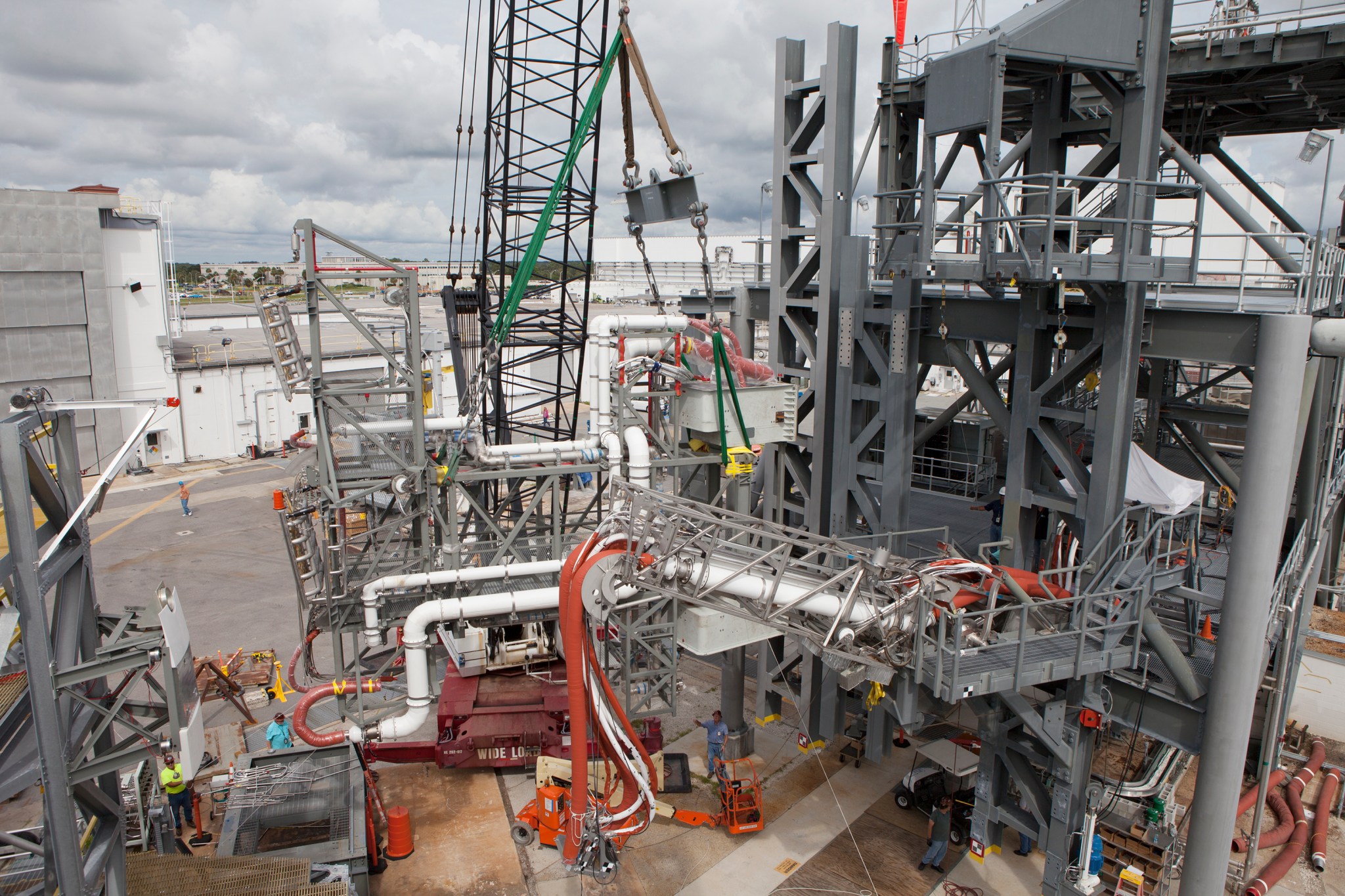By Steven Siceloff,
NASA’s Kennedy Space Center, Florida
NASA’s Kennedy Space Center has transformed from a government-focused center into a spaceport open to many different users with their own unique needs and goals. Making the transformation ultimately successful is now in the hands of spaceflight specialists at Kennedy including the center’s corps of professional engineers.
Having historically solved a slew of launch system, spacecraft and ground support equipment issues, Kennedy’s engineering team now supports private companies just starting out in space, offers guidance to established aerospace companies and designs and builds the massive ground machinery that will launch NASA’s Space Launch System (SLS) rocket and Orion spacecraft.
“What we really bring to the table is extremely competent engineers who know how to pull together complex projects,” said Scott Colloredo, deputy director of the center’s Engineering Directorate.
Colloredo was instrumental in laying out an approach for the multi-user spaceport in the wake of the Space Shuttle Program’s retirement. “We essentially re-architected the space center from shuttle to this multi-user spaceport. In Engineering, we’re now executing what we set out to do and that’s mainly through supporting the programs.”
The directorate realigned its specialists so each program at the center would have a chief engineer and engineering team that specializes in the program’s needs and is on-hand to help solve problems quickly.
The realignment set up four groups:
- Technical Performance and Integration, which ties the directorate’s program support together,
- Commercial Systems, including NASA’s Launch Services Program and Commercial Crew Program as well as other programs and commercial partners,
- Exploration Systems and Operations, working with NASA’s Ground Systems Development and Operations, which is setting up and operating ground support and related systems for SLS and Orion missions, and
- Laboratories Development and Testing, which supports International Space Station and other research environments.
Each area requires different skills and flexibility, Colloredo said. Commercial, for example, requires its teams to react to changes very quickly. Engineers are on the LSP teams to tackle questions that arise ahead of launches of some of the most complicated robotic probes ever built to operate far from Earth and out of reach of any repair crew.
The work ranges from an analysis of an unexpected condition to offering alternatives for components or processes to make sure mission and launch goals are met.
“If we simplify the decisions, flatten the structure of the organization and empower the employees to make their own decisions and managements, then we can keep up with the speed of changing program and commercial needs,” Colloredo said.
In the Exploration Systems and Operations group, the engineering team is testing the machinery that will be installed on the mobile launcher for the first launch of the SLS rocket and Orion spacecraft.
The testing is underway at Kennedy’s Launch Equipment Test Facility, a large area at the center designed to put hardware such as swing arms and umbilical connectors through stresses similar to those they will experience in a real liftoff.
“We’re in the real deal now, the prototyping phase is over,” Colloredo said. “We’re dealing with the real hardware, it’s got to work.”
The testing comes at the same time as other engineers are working on modifications to the Vehicle Assembly Building, the mobile launcher and the launch pad at Launch Complex 39B. When issues come up, engineers are already on-site and can provide changes and answers within hours, Colloredo said.
Kennedy’s engineers are supporting multiple spaceflight efforts – Boeing and SpaceX for Commercial Crew Program, SLS and Orion, plus Blue Origin’s emerging spaceflight system – along with the launches of NASA’s satellites and uncrewed commercial cargo missions.
“We can’t help but see how each one is doing and make sure they’re all supported even though they’re all different,” Colloredo said. “We’re building on the legacy of Mercury, Gemini, Apollo and shuttle. More kinds of missions will be launching from here, with only a short duration between them, going to different destinations. What could be better?”























